Q&A Special: Film Director Wim Wenders | reviews, news & interviews
Q&A Special: Film Director Wim Wenders
Q&A Special: Film Director Wim Wenders
On completing the project that Pina Bausch wanted, even after her death
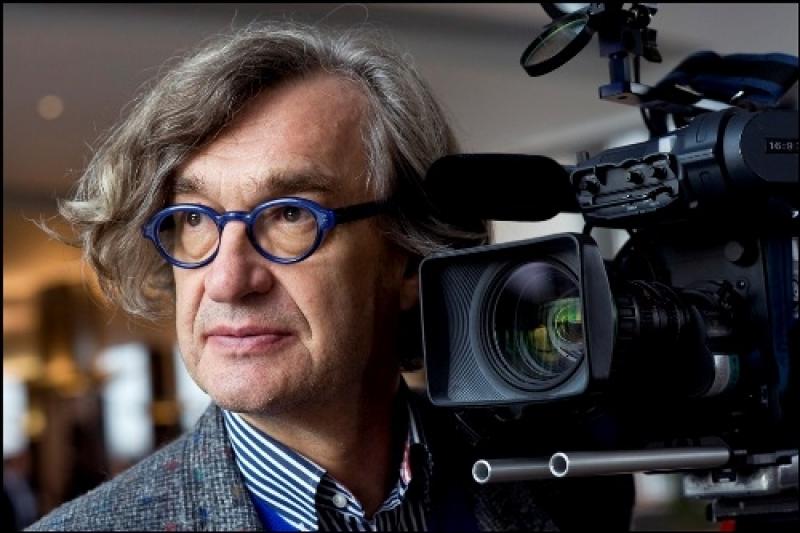
Wim Wenders (b 1945) is one of the great travellers of contemporary cinema. Multi-disciplinary and theme-driven, his work often asks questions about memory and identity, and pulsates with the strong spirit of very particular places.
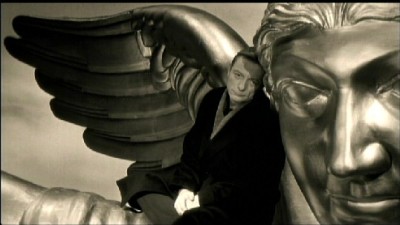 A breakthrough documentary in 1999, Buena Vista Social Club, about a group of pre-Castro Cuban jazz musicians, underlined Wenders’s gift for poetic resurrection of lost pasts, and his clear eye, and ear, for musical culture outside the mainstream. Now, he’s back with a long-nurtured film, Pina 3D, about choreographer Pina Bausch, someone to whose art Wenders was converted (as he explains here) some 10 years after her ensemble in Wuppertal, a small town near Düsseldorf, started to make waves through contemporary dance. She died in 2009, which almost led Wenders to abandon his film; it was premiered to huge acclaim at this year's Berlin Film Festival.
A breakthrough documentary in 1999, Buena Vista Social Club, about a group of pre-Castro Cuban jazz musicians, underlined Wenders’s gift for poetic resurrection of lost pasts, and his clear eye, and ear, for musical culture outside the mainstream. Now, he’s back with a long-nurtured film, Pina 3D, about choreographer Pina Bausch, someone to whose art Wenders was converted (as he explains here) some 10 years after her ensemble in Wuppertal, a small town near Düsseldorf, started to make waves through contemporary dance. She died in 2009, which almost led Wenders to abandon his film; it was premiered to huge acclaim at this year's Berlin Film Festival.
In recent years, Wenders has made fewer films of global reach than the immense success of Paris, Texas and Buena Vista Social Club might have suggested, becoming president of the European Film Academy in 1996; and, since 2007, he’s been on the advisory board of the World Cinema Foundation. Five times married, he currently lives in Berlin where he runs his own company, Neue Road Movies.
Wenders is also an avid photographer (his wife Dorota is, too) and has exhibited, all over the world, images of the world as he sees it: huge landscapes, forgotten spaces, unusual corners – in brilliant close-up – of major cities, photos redolent of his sweeping, evocative cinematography. At the Haunch of Venison in London, a Wenders show, Places, strange and quiet, opened last week featuring photos, some over a quarter-century old, from locations as varied as Armenia, Japan (pictured below, The Red Bench, Onomichi © Wim Wenders, courtesy Haunch of Venison), the US and Germany.
Wenders is a dramatic-looking 65-year-old, tall, with a mop of long curly grey hair, and wearing now trademark round, heavy-rimmed spectacles. Three days ago he talked to theartsdesk about his relationship with Pina Bauschand how he went about making the new film. Pina 3D is reviewed on theartsdesk here.
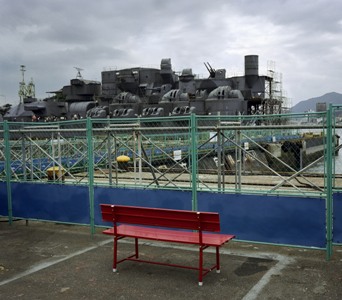
JAMES WOODALL: When and why were you first affected by Pina Bausch?
WIM WENDERS: I was very reluctant to come into contact with Pina because I didn’t have much to do with dance. I thought it didn’t concern me. In the summer of 1985, I and my girlfriend were in Venice, and there was a retrospective of Pina Bausch’s works, with posters all over the place, and she said, “We have to see this,” and I said, “No, I have other plans for Venice.”
But she insisted, so eventually one evening I let myself be dragged into a dance show I didn’t expect much from. It was called Café Müller and after a few minutes I found myself on the edge of my seat crying, compulsively. I couldn’t stop for the entire show. I realised I’d never seen anything like it before, anything as powerful, anything that didn’t need words and still conveyed to me more about the relationships between men and women than in the whole history of cinema. I was shocked and happy at the realisation that this was very, very important.
She had in a way set her hopes on me, because she wanted to find a way to record her work in a different way
I prolonged the stay in Venice and saw all the other things - got an overdose of Pina’s work, so to speak - and as she was there I was able to meet her for 15 minutes and sit with her and talk, and see who she was, look into her eyes: though I’d rather have her look into mine, because her look was really truly amazing. She looked at you like nobody else has ever looked, right through you. You wouldn’t even feel naked; you’d feel well protected by it but she saw things nobody else saw and you’d rather not show.
So what was it particularly about Café Müller that struck such a chord in you and stuck around?
Café Müller is from the late 1970s, a classic piece of hers, Minimalistic and very powerful (pictured below, Bausch in Café Müller). It has only six performers; four of them are sleepwalking. It’s a very metaphysical show in a way but also very physical, very immediate, and it also talks about longing, about love, about attraction, how men and women are attracted to each other, but also how they’re repulsed. It’s all there. Everything you can tell about men and women is there in a nutshell.
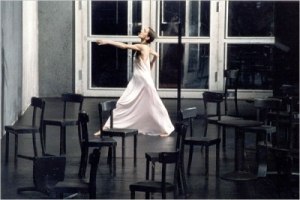 Was it at that point that you started to catch up with all of Pina Bausch’s work and then, indeed, see everything she did thereafter?
Was it at that point that you started to catch up with all of Pina Bausch’s work and then, indeed, see everything she did thereafter?
I travelled to Wuppertal and also saw Pina’s work all over the world, because Pina herself travelled a lot: Los Angeles, New York, Paris. I caught up with her as often as I could and over the years, we did become really good friends. The idea for a film slowly took shape, and Pina herself took it more and more seriously. At my initial suggestions she smiled a bit, but then, after a number of years, it was her reminding me that I’d suggested that and that we should do it.
Were there many other directors who tried or wanted to make a film about her, or was your access special?
My access was pretty exclusive. Pina was involved in a number of documentaries, with people making films about her, but her interest in what I’d proposed was much bigger - she trusted in me for it. She had in a way set her hopes on me because her interest was that, together with the film-maker – and in this instance she thought it really was going to be me – she wanted to find a way to record her work in a different way.
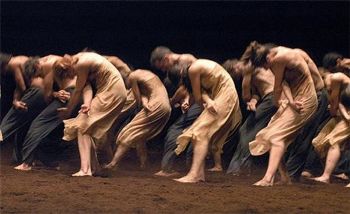 She’d been involved in some TV recordings, for instance of The Rite of Spring (pictured left), but they’d been unhappy. And she knew from her own experience that it wasn’t easy to record dance. She knew that there was an invisible wall between the stage and the screen. Yet she trusted that I would find a way to overcome that. To find a language, together.
She’d been involved in some TV recordings, for instance of The Rite of Spring (pictured left), but they’d been unhappy. And she knew from her own experience that it wasn’t easy to record dance. She knew that there was an invisible wall between the stage and the screen. Yet she trusted that I would find a way to overcome that. To find a language, together.
It was quite a heavy duty and responsibility, I realised, because she expected somebody would find something essentially better. And looking at all her filmed stuff and other dance movies, I realised I couldn’t do better. The craft that was at my disposal could do a number of things and they had all been tried: camera, dolly, crane, tripod, whatever you can do to have a camera approach an existing play or piece of choreography – there are only a handful of things you can do.
You can do it a little better, maybe. Maybe more carefully, but you can’t do it essentially; and I felt, essentially, that the wall was still there. The immediacy of Pina’s work, the physicality, the contagious quality of it – that wasn’t going to end up on screen and I told her. I told her I didn’t have… I couldn’t do miracles and that I’d have to disappoint her high hopes. And therefore I hesitated and didn’t want to do it, and there was probably no use in doing it, because she expected something…
And then she dies…
…Yeah, but we found a solution before she died. It wasn’t in myself that we found a solution. I couldn’t dig deeper in order to find it. It was in a corner where I hadn’t looked. It was in technology.
I didn’t want the “attraction” of 3D, I wanted its very nature. I wanted its possibilities to lead me to the kingdom of the dancers, which is space
It was 3D, that first showed up, or the first glimpses of 3D did, in 2007. And for me it was in a tiny little concert film called U2 in 3D I saw by accident, and it was a huge revelation: the eureka moment. I called Pina from the screening room and said, “Pina, I think I know now.” I didn’t have to say more.
Pina was excited; I visited her, and told her about 3D and I said that this was what we’d been missing. That was the invisible wall. “I now have space as a tool, I think, with this new language. And we can therefore do justice to your work.” And that’s when we began together concretely to plan the film.
And the first thing Pina did was select the pieces she wanted to be part of the filming and she wanted to have filmed in this new language. Well, it was wishful thinking somewhat, as I didn’t actually know where the technology stood. I'd seen it just once, realised that it was early days, there was no major film out yet but I still thought it was the answer. And Pina’s interest was in the fact that she picked four pieces to form the backbone we decided upon for the film.
I started to test 3D, found some collaborators, the chief one – the only stereographer who was working in Europe, a pioneer in the field who’d been doing it already for 10 years – called Alain Derobe. All the equipment, the prototype equipment available all over Europe, in London, Munich, Paris, carried his name, it was all handmade. Alain Derobe was the guy, but he’d never shot a movie. He’d done projects, installations, fairs and museums and things. But he’d never had the experience of an entire film.
He leapt at the chance and was very happy when I told him I didn’t want to use 3D as it existed – as it’s been used in every blockbuster I’d seen so far. That’s not what I wanted. I didn’t want the “attraction” of 3D, I wanted its very nature. I wanted its possibilities to lead me to the kingdom of the dancers, which is space. Let’s invent, I thought, a 3D which makes itself forgotten after five minutes. And that was a tall order.
Was there something in the fact that you share nationality that made the project, for you, unavoidable?
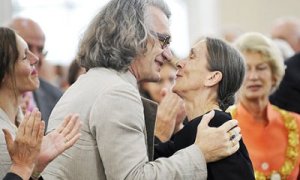 I think the fact that we were born just 50 km away from each other, Pina during the war, me directly afterwards, into this postwar Germany of the 1950s and 1960s – I think this condition was very similar. We’re both utterly romantic. We’re both also workaholics, which is something that comes from that generation. Pina worked every single hour of her life; she always worked, relentlessly. So she was a great romantic, a great researcher, and the thing that really connected us both in our respective fields is that we could only start from scratch, that there was nothing to build upon and that everything had to be based on experience.
I think the fact that we were born just 50 km away from each other, Pina during the war, me directly afterwards, into this postwar Germany of the 1950s and 1960s – I think this condition was very similar. We’re both utterly romantic. We’re both also workaholics, which is something that comes from that generation. Pina worked every single hour of her life; she always worked, relentlessly. So she was a great romantic, a great researcher, and the thing that really connected us both in our respective fields is that we could only start from scratch, that there was nothing to build upon and that everything had to be based on experience.
Pina reinvented dance; I felt in my own way that I had to reinvent film-making, because I couldn’t build on anything that had gone before. Plus, something that really linked us too was that we spoke the same cockney-argot from the Rhine area, which is not an intellectual language but a very joyful language – you can tell lots of jokes in it, but you can’t express any metaphysical ideas in it. There’s some argot that is meant for everyday life and Pina never shook that off. To the end of her life, Pina had that accent.
One of her great characteristics was that she did not believe in words and did not rely on words, but she did like to express herself. She had a horror of explaining or interpreting a work. This is something I can really relate to. I somehow learnt High German, as we say. Pina never did. Pina had to replace language and words in a different way to express as much as she did, and without words in the language that she studied like nobody before her. She researched like nobody before her. She created a whole new anthology of the language of our bodies and that was pioneering work.
This I slowly understood; the more I met her and the more I saw how she worked, I realised as a film director I was an illiterate in this language. We always fancy ourselves: film directors do. We know the body and the actor in front of us, his body language, his presence. Of course we give him directions, we think we control it. Little did we know: Pina was a master in that language and I felt and I learnt from her that I wasn’t even a beginner.
- Wim Wenders' photography exhibition, Places, strange and quiet is at the Haunch of Venison, London W1, till 14 May
- Wenders' film Pina 3D goes on release on Friday - reviewed on theartsdesk here
- Read theartsdesk's interview: Meeting Pina Bausch
Watch the opening of Wim Wenders' film Paris, Texas
Explore topics
Share this article
Add comment
The future of Arts Journalism
You can stop theartsdesk.com closing!
We urgently need financing to survive. Our fundraising drive has thus far raised £49,000 but we need to reach £100,000 or we will be forced to close. Please contribute here: https://gofund.me/c3f6033d
And if you can forward this information to anyone who might assist, we’d be grateful.

Subscribe to theartsdesk.com
Thank you for continuing to read our work on theartsdesk.com. For unlimited access to every article in its entirety, including our archive of more than 15,000 pieces, we're asking for £5 per month or £40 per year. We feel it's a very good deal, and hope you do too.
To take a subscription now simply click here.
And if you're looking for that extra gift for a friend or family member, why not treat them to a theartsdesk.com gift subscription?

Comments
...